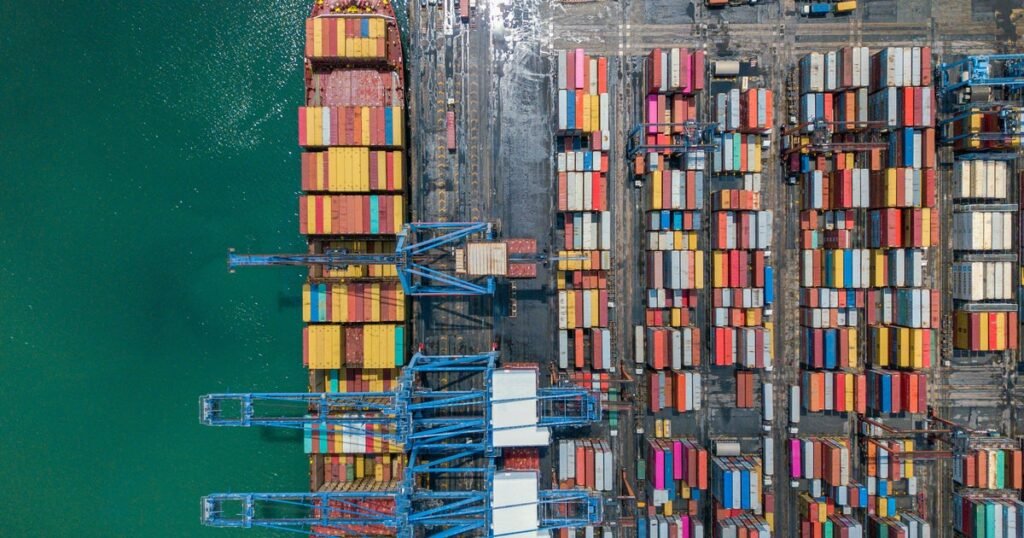A core ingredient of the protectionist commerce insurance policies President Trump is scheduled to announce on Wednesday — a deliberate import tax blitz he has known as “Liberation Day” — are so-called reciprocal tariffs. Mr. Trump has touted such levies as a solution to stage the enjoying subject with different international locations that impose greater tariffs on U.S. imports, in addition to to spice up home producers.
However some economists say that tit-for-tat tariffs with key buying and selling companions might be exhausting to construction, whereas additionally roiling world commerce and driving up prices for U.S. shoppers and companies. Here is what to learn about reciprocal tariffs.
What are reciprocal tariffs?
Really reciprocal tariffs would impose the identical tax on U.S. imports that different international locations cost on American exports on a product by product foundation. For instance, if a rustic imposed a 6% levy on American-made sneakers, Mr. Trump would tax that nation’s footwear on the similar fee.
At the moment, the U.S. and its buying and selling companions cost one another completely different levies on the identical merchandise. Germany, for example, places greater tariffs on autos made within the U.S. than what Washington, D.C., prices on German car imports.
“Reciprocal signifies that if a rustic has greater tariffs than we do on sure merchandise, we’d elevate it to that stage,” Alex Jacquez, chief of coverage and advocacy at Groundwork Collaborative, a left-leaning public coverage assume tank, advised CBS MoneyWatch.
That may be administratively advanced given the tens of hundreds of codes that decide the tariff charges on a wide range of merchandise.
“Establishing reciprocal tariffs throughout each product class with each commerce associate could be fully infeasible with our administrative capability,” Jacquez stated.
Different specialists recommend the objective is much less about driving firms to shift their manufacturing to the U.S. or producing federal income than about pressuring different nations to strike commerce offers that the Trump administration is snug with.
Are reciprocal tariffs the identical as country-based tariffs?
Quite than impose completely reciprocal tariffs, the White Home may as an alternative announce country-specific tariff charges calibrated to the their commerce imbalance with the U.S.
“They are going to in all probability provide you with a blended fee that isn’t reciprocal by product, however is reciprocal by saying their tariffs are 10% greater than ours on common, so we’ll be imposing 10% tariff across-the-board on all items,” stated Jacquez, who previously labored as an financial coverage analyst within the Biden administration.
That strategy may consequence within the U.S. taxing different nations’ merchandise at vastly completely different fee than they do ours.
“It’s going to hit quite a lot of merchandise very in another way in a proximate means, as a result of it might be balanced by nation however not by import or export,” Jacquez stated. “That’s the place issues will come up, and you may see a state of affairs by which international locations retaliate in opposition to us.”
Who’re the “Soiled 15”?
Trump administration officers have singled out a bunch of countries they dubbed the “Soiled 15,” a reference to the 15% of nations anticipated to be hit hardest by the brand new reciprocal tariffs given their commerce surplus with the U.S.
These nations account for “an enormous quantity of our buying and selling quantity,” U.S. Treasury Secretary Scott Bessent advised Fox Information’ Maria Bartiromo on March 18, with out naming the commerce companions. Nationwide Financial Council Director Kevin Hassett additionally advised Fox Information that the White Home is concentrating on 10 to fifteen nations with the largest commerce surplus with the U.S. Like Bessent, he additionally avoided naming these nations.
Simon MacAdam, deputy chief world economist with Capital Economics, thinks probably targets embody main U.S. buying and selling companions similar to China, the European Union and Vietnam. In 2024, the most important U.S. commerce deficits across the globe — which means international locations from which the U.S. imports greater than it exports — was with the next nations, in response to federal information:
- China ($295.4 billion)
- European Union ($235.6 billion)
- Mexico ($171.8 billion)
- Vietnam ($123.5 billion)
- Eire ($86.7 billion)
- Germany ($84.8 billion)
- Taiwan ($73.9 billion)
- Japan ($68.5 billion)
- South Korea ($66 billion)
- Canada ($63.3 billion)
- India ($45.7 billion)
- Thailand ($45.6 billion)
- Italy ($44 billion)
- Switzerland ($38.5 billion)
- Malaysia ($24.8 billion)
- Indonesia ($17.9 billion)
- France ($16.4 billion)
- Austria ($13.1 billion)
- Sweden ($9.8 billion)
Are reciprocal costs more likely to drive up shopper costs?
Consultants say reciprocal tariffs would imply added prices for U.S. companies, which in flip would probably elevate shopper costs as a way to defend their revenue margins.
“Tariffs are a tax on a enterprise bringing a product into the nation. After they obtain it at a port of entry, whether or not or not it’s an airport or seaport, they need to pay the obligation to have it admitted into the nation,” Chris Barrett, a professor at Cornell SC Johnson College of Enterprise, advised CBS MoneyWatch. “You’ve got simply added a value on for the enterprise, and people prices get handed on, at the very least to a point, to shoppers.”
How a lot costs may rise stays unclear. In the meantime, costs may fall if Mr. Trump later lowers or removes reciprocal tariffs following commerce negotiations.
However when there isn’t a good substitute for a selected good, shopper prices are more likely to rise extra sharply.
“The extra value insensitive they’re, the extra probably they’re to shoulder the burden of the tax,” Barrett stated.
